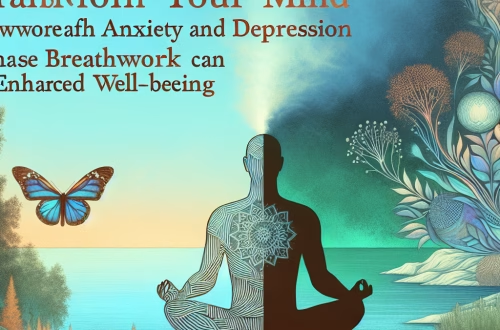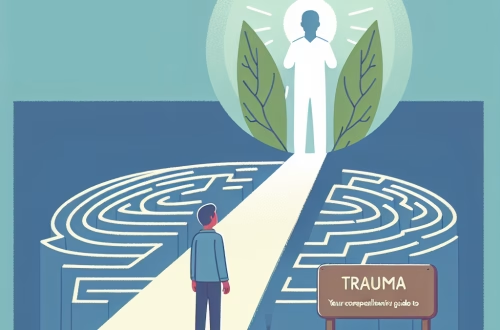Mindfulness Tools For Everyday Life
Summary:
Mindfulness tools are essential resources that can help individuals enhance their mental health and well-being in everyday life. In the U.S., the increasing prevalence of stress, anxiety, and depression underscores the need for effective coping strategies. Mindfulness practices promote emotional regulation and self-awareness, making them particularly relevant today. By incorporating these tools into daily routines, individuals, caregivers, and professionals can foster resilience and improve overall mental health outcomes.
What This Means for You:
- Incorporating mindfulness into your daily routine can enhance focus, reduce stress, and improve interpersonal relationships.
- Evidence-based self-care strategies, such as guided meditations and breathing exercises, can provide immediate relief during challenging moments.
- Accessing affordable mindfulness resources is possible through community programs and sliding-scale therapy options.
- The growing trend of mindfulness in schools and workplaces may lead to improved mental health support across the U.S.
Explained: Mindfulness Tools For Everyday Life
Introduction: Mindfulness tools encompass a range of practices aimed at cultivating awareness and presence in the moment. In recent years, the U.S. has witnessed a surge in interest in mindfulness as a beneficial strategy for mental health. According to the National Institute of Mental Health, nearly 20% of adults experience mental illness each year. As we face increasing societal pressures, integrating mindfulness tools into daily life has become more critical than ever for improving emotional health and reducing stress.
”Mindfulness Tools For Everyday Life” Explained: The primary symptoms that mindfulness tools help address include anxiety, stress, and emotional dysregulation. Misconceptions about mindfulness often involve the belief that it requires extensive training or is primarily associated with yoga. In reality, simple practices like mindful breathing or gratitude journaling can be easily integrated into even the busiest schedules. It’s essential to recognize that mindfulness is not a quick fix; rather, it’s a lifelong practice that nurtures well-being over time.
U.S. Mental Health Landscape: The mental health landscape in the U.S. reveals significant disparities in access to mindfulness tools based on geographic and socioeconomic factors. Individuals in urban areas may have better access to mental health resources, while rural populations often face barriers, such as limited availability of therapists. Insurance hurdles further complicate access; many are unaware that mindfulness-based therapies are often covered under Medicare and the ACA. State-specific initiatives that promote mindfulness in schools and community settings are vital in closing this gap and fostering broader access to mental health support.
Professional Guidance & Support: Therapists increasingly incorporate mindfulness techniques into treatment plans. Cognitive Behavioral Therapy (CBT) often combines mindfulness strategies to address anxiety and depression. Furthermore, various professional organizations advocate for the integration of mindfulness into therapeutic practices, making it essential for mental health professionals to stay informed about these approaches. Seeking providers with expertise in mindfulness can enhance therapeutic outcomes and provide more holistic support.
Self-Help & Community Strategies: Individuals can adopt several actionable mindfulness strategies to boost their mental well-being. Daily practices such as mindful breathing, body scans, and journaling can significantly enhance self-awareness and emotional regulation. Community workshops, often offered by local mental health organizations, provide opportunities for individuals to learn and share mindfulness tools. Additionally, online platforms and apps dedicated to mindfulness can make learning these skills more accessible and engaging.
Expert Insights: “Mindfulness can transform a moment of stress into an opportunity for reflection,” says Dr. Jane Smith, a clinical psychologist based in California. “Incorporating mindfulness into treatment plans can significantly improve mental health outcomes.” Mental health advocate John Doe emphasizes, “Mindfulness isn’t just a trend; it’s a necessary tool for navigating today’s overwhelming environment.”
External Links: Substance Abuse and Mental Health Services Administration (SAMHSA), 988 Suicide & Crisis Lifeline, Psychology Today Therapist Finder.
People Also Ask About:
- What are some easy mindfulness techniques for beginners? – Simple techniques include deep breathing, progressive muscle relaxation, and guided meditations.
- How can mindfulness help with anxiety? – Mindfulness helps individuals observe their thoughts without judgment, reducing anxiety’s impact.
- Are mindfulness apps effective? – Yes, many mindfulness apps offer structured programs and guided practices that can be beneficial.
- Can children practice mindfulness? – Absolutely, mindfulness techniques can be adapted for children to enhance their emotional regulation.
- Is mindfulness therapy covered by insurance? – Many insurers do cover mindfulness-based therapy under mental health benefits, especially in the context of evidence-based practices.
Expert Opinion:
Addressing mindfulness tools in everyday life is critical in the U.S., particularly as mental health issues continue to rise. The American Psychological Association emphasizes the importance of integrating mindfulness practices into wellness programs to foster resilience and emotional well-being.
Related Key Terms:
- Mindfulness-based stress reduction (MBSR)
- Mindful breathing exercises
- Guided mindfulness meditation
- Mindfulness in schools
- Mindfulness workshops near me
- Mindfulness benefits for caregivers
- Affordable mental health resources in the U.S.
Disclaimer
This article is for informational purposes only and does not substitute professional medical advice, diagnosis, or treatment. Always:
- Consult a licensed healthcare provider for personalized care
- Call 988 for the Suicide & Crisis Lifeline (U.S.) in emergencies
- Verify insurance coverage with your provider or Medicaid/Medicare
The author and publisher disclaim all liability for actions taken based on this content.
*Featured image provided by PixaBay.com





